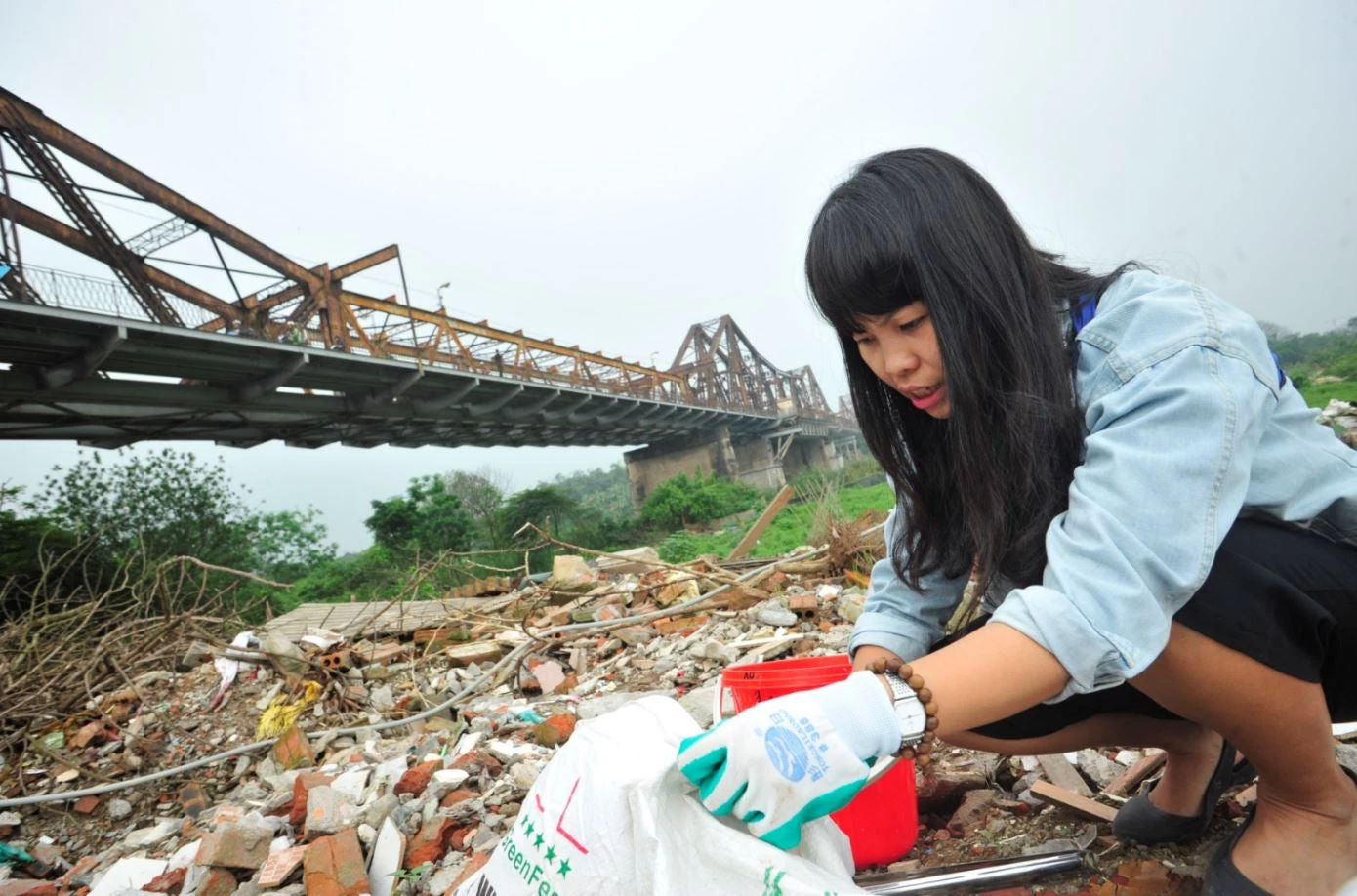 Vietnam se está moviendo hacia la acción para abordar su creciente basura plástica
Vietnam se está moviendo hacia la acción para abordar su creciente basura plástica
In the seminal 1968 classic film, The Graduate, Dustin Hoffman’s Ben Braddock is pondering his future. He is told by a well-meaning family friend to consider his future. In plastics. “There’s a great future in plastics,” Mr. McGuire tells Ben.
A decade earlier, LIFE Magazine’s 1955 cover celebrated the potential of ‘throwaway living’ – an era where the widespread use of plastics was helping to “cut down household chores.” This “miracle” product was found to be cheap, light, malleable and waterproof.
Fast-forward to 64 years later, and the same properties that make plastics so versatile in innumerable applications—durability and resistance to degradation—make these materials difficult or impossible for nature to assimilate.
Over the last half century (and especially in the last 15 years), the growth of plastics production has substantially 
Now, in mid-2019, the world has woken up to the scourge of indiscriminate use of plastic products. Daily news articles and viral videos show dead whales choked on plastic bags, fish with microplastics, and rivers of plastic flowing through the countryside. Nowhere appears safe. Plastic has been found at the deepest point on earth. A 2015 research article estimated that eight million tons of plastic waste enters the oceans every year. Published in the Journal Science, the seminal report showed the regional dimension of mismanaged plastic waste – concentrated largely in the East Asia region. In early 2019, China’s ban on plastic imports brought a transboundary element to the global trade on plastic waste – with 111 million metric tons of plastic waste needing to find new disposal/recycling options. The recycling of plastics needed to be revitalized, but what was also urgently needed was new materials, new business models, new technology and new financing.
What was born of innovation, now needs innovation to help deal with the impact it has had. Countries, companies and communities started moving forward with initiatives, innovations and investments that strive to address the growing pollution from marine plastics. International and regional bodies (from the 2017 UN Resolution, to the EU Plastics Strategy to the ASEAN Bangkok Declaration on Marine Plastics) and countries (including Indonesia, India, Malaysia, Thailand) are making commitments towards responsible policies, regulations, and identifying key investments to contribute to less plastics production, and towards a circular economy where waste can become value.
Food and beverage companies bearing the brunt of (now) more commonplace brand audits, are getting into the business of financing waste management. Initiatives include the New Plastics Economy Global Commitment, led by the Ellen MacArthur Foundation, which is signed by many of the world’s largest packaging producers, brands, retailers and recyclers, as well as governments and NGOs. Individual companies are undertaking research and pilots to increase recycled content in bottles, or looking into upscaling plastic waste into consumer products like shoes.
At the local level, innovators across the East Asia and Pacific region are developing creative solutions to reduce plastic waste, piloting new business models, and expanding community benefits in terms of livelihoods and incomes. Some of these innovators can be found here.
At the World Bank, we are working to tackle this massive problem at the global, regional and country-level. PROBLUE is a new global MDTF that was launched in 2018, with a strong focus on marine litter. In the East Asia region, the World Bank has assigned marine plastics as a priority topic and we have developed a World Bank Regional Marine Plastics Framework and Action Plan to align our engagements across sectors and countries. At the national level, we are already working with national governments to implement related policies and regulations, enhance analytics and capacity, and finance the critical investments. In Indonesia, we have an Oceans Multi-Donor Trust Fund, which will help fund key initiatives to tackle the problem across the Indonesian archipelago. In the Philippines, Vietnam, Cambodia, China, Thailand and Myanmar, we are working on range of analytical tasks from plastics assessments to policy analysis to helping with national action plans.
Our team is bringing together the public and private sectors to help promote and scale-up innovative solutions across the value chain. For plastics, these range from upstream materials innovation, producing plant-based and biodegradable plastics, to downstream recycling /upscaling technologies and innovative solutions. As we explore ways to reduce plastics and plastics packaging, and increase recycling, we must of course ensure the relative advantages and disadvantages of new materials, product redesign, reuse, material recycling, waste-to-energy, and recycling technologies that consider the different waste challenges across our diverse region.
Like Benjamin Braddock in The Graduate, we too are living a dramatic coming of age. What started as a wonderful new lifestyle became a local and minor inconvenience. Finally, we are seeing our plastic obsession for what it now is: a global challenge – with real costs, and real impacts. But innovation in addressing plastics waste is gaining momentum, and we must harness this to step away from the throwaway culture towards a responsible future.


Join the Conversation